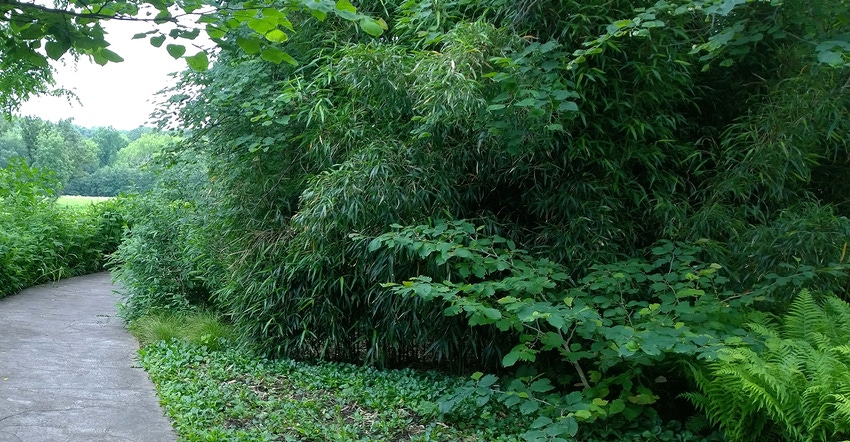August 6, 2021

River cane is like a shrub, although it is technically in the grass family and produces no wood. It makes ideal, secluded nesting sites for a number of bird species, including warblers.
Massive patches of river cane once grew commonly along riverbanks throughout the Ozarks. These patches, called canebrakes, are excellent at preventing erosion along creeks and rivers because they have an extensive and dense-spreading root system that tolerates short-term flooding. Unfortunately, most canebrakes are long gone, having been severely grazed by livestock.
Breakdown of native bamboo
River cane is only one of three shrubs native to Missouri. It is considered a native species of bamboo that grows 7 to 10 feet high.
Although river cane suckers moderately to aggressively once established (one to two years), it grows very densely in part sun or part shade, rendering it virtually weed-free. In full shade, it grows more openly with wider spaces between the stems. It also grows in full sun, although the leaves will be yellowish green.
It is useful grown as a screen or hedge. However, finding the right location is not always obvious. Plant river cane too close to a property line, and the next-door neighbor may become frustrated when it begins to sucker. Locate it too close to a walk or driveway, and it will block the path when covered with snow or water.
The best place to grow river cane is 5 feet away from a path and surrounded by a barrier. Concrete or asphalt make a good barrier as long as it is at least 4 feet wide. Mowed grass works too, because when cane suckers into turf, the mower cuts off new shoots that appear in late spring and summer, stopping their spread.
An alternative is to install a bamboo root barrier 24 inches into the ground and 2 to 3 inches above ground. Barriers can be installed with a trenching machine. Always call before you dig (dial 811 anywhere in the country) to mark all buried cables, gas and water lines.
Another option is to plant river cane beneath mature black walnut trees. Here, it will spread more moderately and generate fewer suckers. When suckers are few, cutting them off and digging them up when they appear in July is an easy chore. If you wait until later in the season, sprouts root in, and are difficult to remove.
Because cane plants rarely flower and produce seed (every 30 to 40 years), they are propagated by division in early March. Dig small stems that appear at the edges of established patches, and try not to loosen the soil ball when digging.
Spray the foliage with Wilt Pruf, an anti-transpirant that prevents wilting and leaf drop. Transplant shock is significant with bamboo, so expect one to two full growing seasons for plants to fully recover and resume growth.
About the Author(s)
You May Also Like




